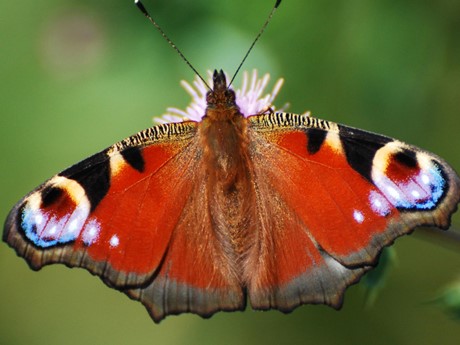Ongoing research projects using the Nature's Calendar data
We are temporarily unable to share the Nature's Calendar data while we carry out some necessary technical developments to the database.
Monitoring the response of forests to climate change
Name: Jenny shepherd
Organisation: Cranfield University
Research type: PhD
How Nature's Calendar data is being used: the Nature's Calendar data will be combined with other time series datasets to monitor the reponse of temperate forests and grasslands to climate change.

Oak budburst (Photo: Judith Garforth)

Oak leaves falling (Photo: Ben Lee)

Oak bare tree (Photo: Ben Lee)
The impact of climate on Edible Dormouse populations
Name: Alya Almulla
Organisation: University of Glasgow
Research type: PhD
How Nature's Calendar data is being used: Alya's PhD focuses on the invasive species of Edible Dormouse (Glis glis) found in the Chilterns and how their life-history traits are affected by climate change. It is an increasing population with their reproduction being tightly linked with the amount of food resources found that year. The Nature's Calendar data is being used to assess how mast years and the amount of fruit produced are affecting the population within a changing climate.

Credit: Alya Almulla
Drivers of plant phenology in Britain
Name: Emily Hickinbotham
Organisation: Newcastle University
Research type: PhD
How Nature's Calendar data is being used: Plant traits and environmental variables such as temperature will be used alongside Nature’s Calendar data to assess what the main drivers of plant phenological changes are in Britain. Understanding which traits make plant species more likely to undergo phenological changes will be crucial for future conservation efforts and targeting vulnerable species.
Global trends in phenological change and asynchrony
Names: Deirdre Loughnan, Elizabeth Wolkovich, Heather Kharouba, Geoffrey Legault, Simon Joly
Organisation: University of British Columbia
Research Type: PhD thesis
How Nature's Calendar data is being used: The timing of species’ seasonal activities are shifting with changes in climate, with many taxonomic groups differing in the magnitude and direction of these changes. Understanding how species differ in their sensitivity to recent climate change and identifying generalizable trends in their responses is critical to mitigate any resulting changes in community composition or fitness. In this study, we are testing for shifts in phenologies across taxonomic and trophic groups using long-term phenological data from diverse and globally distributed species, with data from both the published literature and long-term monitoring programs, such as Nature’s Calendar.

Red-tailed bumblebee (Photo: WTML)

Bare pedunculate oak (Photo: Ben Lee))

House martin in flight (Photo: North East Wildlife)
The responses of biotic phenology to global climate change
Name: Weiguang Lang
Organisation: College of urban and environmental sciences, Peking University
Research type: Postdoctoral research
How Nature’s Calendar data is being used: In this research, statistical and process-based phenology models driven by environmental cues are the core methods to see how plant, animal and other living beings response to climate change. Widely-collected phenology records are essential to assess the generality and accuracy of these models. So, Nature's Calendar data are being used to calibrate and validate the models. These models will be used to investigate the spatial, inter-specific and inter-trophic differences of response of biotic phenology to climate change.

Speckled wood (Photo: Pete Holmes)

Bluebell (Photo: Judith Garforth)
Title: Dormouse Conservation in upland forests
Name: Charlotte Armitage
Organisation: Exeter University
Research type: PhD
How Nature's Calendar data is being used: Nature's Calendar data is being used to look at resource availability for dormice during their breeding season and how in turn this might impact upon the species success in a changing climate.

Dormouse in torpor (Photo: Charlotte Armitage)
